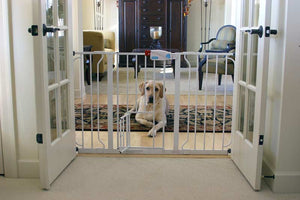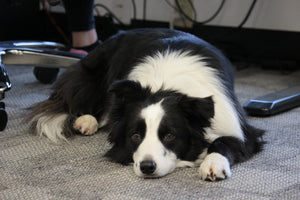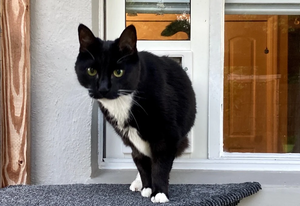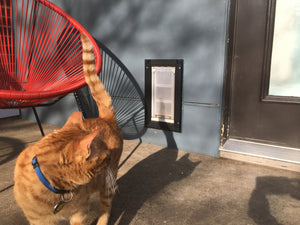How Cost Efficient is Your Pet Door?
I spoke to a woman today who needed two new replacement flaps for her pet door. The current retail of this to-be-kept-nameless pet door is $129 + shipping and she was on her second replacement flap set which cost $51.36 each. In other words, replacement flaps had already cost nearly as much as the original pet door and would soon surpass the pet door as she needed these replacements every year or so. So her questions were 1) was this 'normal' and 2) should she just cut her losses and get something more durable like an all weather dog door?
Every time this question comes up--and in our business that's pretty often--I think of the ink jet printer industry. Cheap printers which then cost a fortune to feed ink to.
Let's start with her first question: Is this normal? Well....yes and no. The difficulty in answering the question lies primarily in the fact that there are many variables involved and, so, some people get lots of use from a given flap while others get very little from the same flap.
Here's a sampling of the issues:
1. First, of course, is how many pets have you got and how often do they go through the pet door? Three labs chasing out after squirrels all day long is different from an old cat that goes out a few times a day to potty.

2. It's not only the frequency but the intensity of usage. Some dogs charge out; others are more sedate and cats are typically quite circumspect. Even the best dog doors sometimes can't hold up to multiple dogs!
3. How much does the flap flex in use? Visualize a flap that's mounted 4 inches below a dogs shoulder and another flap that's mounted 2 inches above the same dogs shoulder. Which one flexes more in use? Of course! And that additional flexing will show up eventually in cracking or tearing across the top of the flap. So the height at which the flap is mounted matters a lot.
Let's carry on just a bit further while we have this image in mind. When you raise the flap up to reduce the flexing, you at the same time increase the 'step-over' height of the pet door. Some day the older dog won't be able to step over the 'step-over'! That day will come sooner the higher you make it. So it follows that a flap that is taller for a given width is better in the long run since you can mount it higher over the dogs shoulder and keep the step-over lower.
4. How is the flap fastened at the top. The cheapest method is to rigidly 'sandwich' the top of the flap between two frame members held together with bolts or screws. That approach maximizes the flexing. Another, more expensive, method is to allow the flap to pivot on a rod. No flexing and much longer life.

As to the second question: Should I bite the bullet now and upgrade? I think we have to recognize that only the customer can decide that. There is, however, one very important point that should not be overlooked in making that decision.
5. Is the flap in shade most of the day or exposed to the sun? If exposed, did the manufacturer use a UV retardant in formulating the flap material? If not, intense sun can break down the flap, especially if it's vinyl, in a surprisingly short time.
Speaking of vinyl, do you have a vinyl slider? Vinyl sliders and aluminum sliding dog door inserts typically do not mate very well.
The difference between aluminum and vinyl (besides the more obvious metallurgical composition differences) lies within the thickness of the tracks. Most aluminum tracks come to about an 1” in thickness, while vinyl tracks often sit between an 1.5” – 1.75” in thickness. While you can always shim (see: wedge) an aluminum door into a vinyl slider, the best bet is to go with a vinyl sliding door dog door insert.

If all you care about is durability then you should buy a rigid flap pet door. Rigid flaps typically never wear out (though sometimes associated hardware like springs or hinges will).
However, every year we get calls from people whose pets suffered pinching from a rigid flap pet door. Some of these injuries are minor, serving mainly to scare the pet. Other times the injuries can be quite severe including one memorable call from a fellow whose greyhound was 'de-gloved' (his term) by a popular brand of pet door employing a rigid flap.
How does that happen? Your pet is on his way out when something startles or scares him. His reaction may be to pull back sharply and, if the flap is rigid and it's a paw sticking out, the flap won't give and pinches. Scared, the pet may just pull harder.
The flexible flap is always a safe alternative and that's an important consideration for most of us. The best doggies doors out there should not hurt your dog!
So is that it?
Well...no. Only one pet door on the market is the best insulated dog door and is backed by a 15 year warranty. It's called 'the Endura Flap' and you can see all of the installation options offered in the Endura Flap line.




